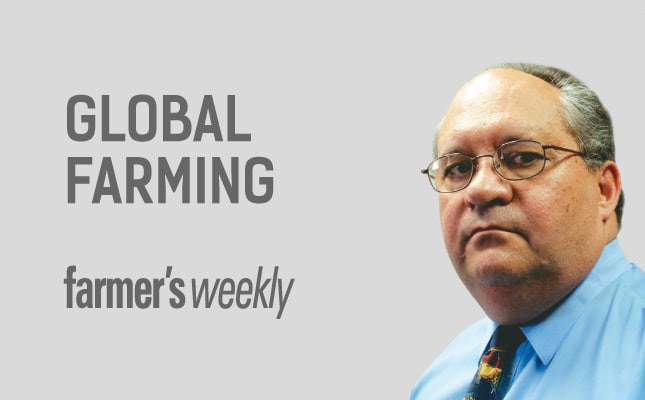
Last year, South Africa received its lowest rainfall since 1904. The key summer crop production areas have been the worst affected, although the impact of the drought is being felt nationwide.
In many extensive production areas, subsistence and small-scale farmers, as well as commercial farmers, have been unable to provide feed for their animals, resulting in heartbreaking scenes.
The impact of drought
The impact of a drought on crop producers is immediate; for livestock producers it is evident later. Intensive livestock producers managed to maintain production during 2015. However, the weakening product-to-feed ratio, driven by the higher maize and soya bean prices, has reduced profit margins.
In the case of milk, higher production from the coastal areas has resulted in lower producer prices. The scarcity, and in some cases unavailability, of roughage has been a major problem. Silage yield, even from irrigated lands, has been far lower than estimated. Lucerne is scarce and available only at high prices.
Late rains saw the planting of more than 750 000ha of maize after the end of the traditional planting window. The Crop Estimates Committee took this into account and produced a surprising first crop estimate of seven million tons.
This is probably over-optimistic as it assumes normal production from the additional planted area. The estimated yield of irrigated lands also looks to be too high.
Agri SA recently completed a survey of the impact of the drought on farmers. The results showed that the maize, wheat, beef and sheep sectors were under severe stress. The oilseed, poultry, pork, wool and Mohair, cotton, wine, vegetable, potatoes and citrus sectors faced moderate stress.
Maize shortage
The Bureau for Food and Agricultural Policy has produced a more realistic estimate for the 2016 maize crop of 6,6 million tons. This means that the country will have to import maize to meet local demand.
We have already seen local prices reach import parity levels. Higher maize prices will have a negative impact on consumers and intensive livestock industries. The higher level of imports will also put considerable pressure on South Africa’s transport infrastructure.
Farmers in the winter rainfall areas are concerned about the level of dams and availability of water for irrigation.
For livestock farmers, the real impact of the drought will only be seen in 2016 and 2017. They will continue struggling to find enough roughage to feed their animals. In the extensive grazing areas, follow-up rain is needed for pastures to recover.
Summer grain producers face another challenge. Farmers in these areas whose crops failed this year, and in some cases also in 2015, will find it difficult to obtain production credit from the banks. The drought is set to affect South Africa’s entire economy.
The BFAP estimates that there will be a 3,76% decrease in the agricultural gross domestic product (GDP) from 2015 to 2016. The country’s GDP will be down 3,38%. Household consumption is predicted to drop 4,26% and the income of unskilled labour will fall 6,4%.
A major difference between the current national drought and the previous one in 1992 is the role of government. In that year, government developed a comprehensive plan to enable farmers to keep on producing. So far, the only real aid for farmers has come through private channels.
While the initiatives instituted by Agri SA and other organisations have obviously been welcome, they will not be enough to ensure maize production in the 2016/2017 season. Neither will these efforts help farmers rebuild seriously depleted herds.
Farmers’ Options
Agricultural publications are currently full of articles providing advice to farmers on surviving the drought. Unfortunately, this is of little use as long as there is a lack of substantial rainfall.
Most farmers have already implemented emergency measures to limit the impact of the drought. Livestock farmers can and do feed supplementary feed to animals to enable them to survive. This is easy to do for a period, but becomes more difficult as the drought continues.
Farmers who can stick it out, however, will benefit in the long run. Livestock profits are traditionally much higher after, than during, a drought. Farmers who spent money to enable their animals to survive will find that the value of the animals has increased by more than the cost of the feed.
Thus, while 2016 will be a difficult year for farmers, those who manage to survive it will enjoy the benefits of higher prices in 2017.
This article was originally published in the 11 March 2016 issue of Farmers Weekly.



